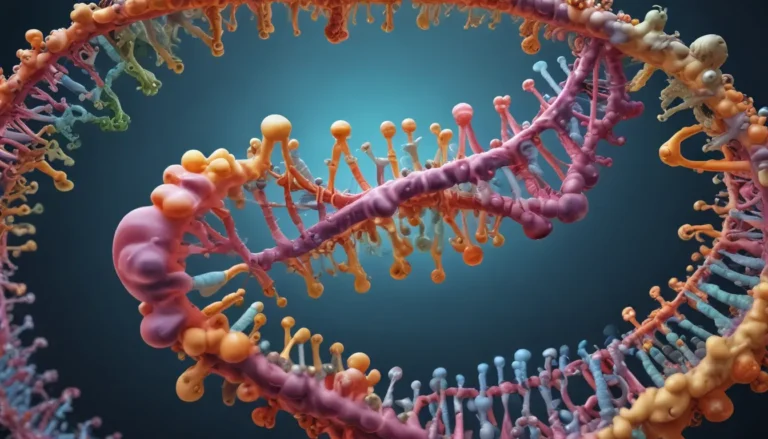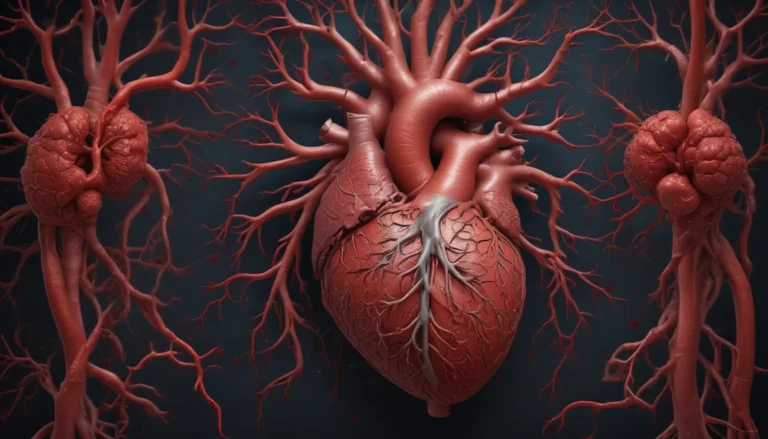A Note About Images: The images used in our articles are for illustration purposes only and may not exactly match the content. They are meant to engage readers, but the text should be relied upon for accurate information.
When it comes to genetics, the world of inheritance can be a complex and intriguing one. We often think of traits being passed down from our parents, like eye color or hair texture. However, there is a lesser-known aspect of inheritance known as sex-linked inheritance, which involves the transmission of specific genetic traits through the sex chromosomes, X and Y. This unique form of inheritance can result in a variety of outcomes that go beyond the typical patterns we are familiar with. In this article, we will delve into the fascinating realm of sex-linked inheritance and explore 11 extraordinary facts that will shed light on the complexities and marvels of genetic inheritance.
Understanding Sex-Linked Inheritance
Sex-linked inheritance refers to the transmission of genes that are located on the sex chromosomes. In humans, males have one X and one Y chromosome, while females have two X chromosomes. This disparity in chromosome makeup results in certain genetic traits being passed down differently based on an individual’s sex.
The X Chromosome Dominance
The X chromosome carries a significantly higher number of genes compared to the Y chromosome. Therefore, most sex-linked inheritance is associated with genes found on the X chromosome. This chromosome plays a key role in determining the inheritance of specific traits.
Male Vulnerability
Males are more likely to inherit sex-linked traits due to the unique nature of their sex chromosomes. With only one copy of the X chromosome, males are more susceptible to expressing any gene located on it. This can lead to the manifestation of certain characteristics associated with sex-linked traits.
Common Examples of Sex-Linked Inheritance
Hemophilia: An Iconic Example
Hemophilia, a bleeding disorder, is a well-known sex-linked trait that exemplifies the nuances of inheritance patterns. The gene responsible for hemophilia is located on the X chromosome, leading to a classic sex-linked inheritance pattern where males are more likely to be affected, while females typically act as carriers.
Color Blindness: A Prismatic Condition
Color blindness is another prominent example of a sex-linked trait. The gene that causes color blindness is situated on the X chromosome, making men more predisposed to this condition. While color blindness can affect both males and females, it is more frequently observed in males due to the distinctive inheritance pattern.
Exploring the Complexity of Sex-Linked Inheritance
Skipping Generations
One intriguing aspect of sex-linked traits is their ability to skip generations. This phenomenon can occur when a female carrier does not exhibit any symptoms of a specific trait, yet her son may inherit the trait and display the associated characteristics.
The Influence of Genotype
Sex-linked inheritance can be linked to both recessive and dominant traits, showcasing the diverse impact of sex chromosomes on gene expression. Males are more likely to express recessive traits due to having only one copy of the X chromosome, while both males and females can exhibit dominant characteristics if they inherit the dominant allele.
Crossing Over and its Implications
Crossing over, the exchange of genetic material during meiosis, can influence sex-linked inheritance. This process can lead to the exchange of genetic material between the X and Y chromosomes in males, potentially impacting the inheritance of sex-linked traits and altering the expression of certain genes.
Manifestation Disparities
The manifestation of sex-linked traits can differ between males and females due to their distinct chromosome composition. Males, with only one X chromosome, are more likely to express genes located on it, potentially resulting in more severe manifestations of certain genetic conditions compared to females, who possess two X chromosomes.
Navigating Sex-Linked Inheritance with Genetic Counseling
Genetic counseling plays a crucial role in helping families affected by sex-linked inheritance understand and manage inherited traits. It provides valuable information about inheritance patterns, potential risks, and available options for preventing or addressing genetic conditions associated with sex-linked traits.
The Continual Exploration of Sex-Linked Inheritance
Ongoing research in the field of sex-linked inheritance continues to yield new insights into the mechanisms by which genes on the sex chromosomes contribute to various traits and diseases. These advancements pave the way for improved diagnostics, treatments, and interventions in the realm of genetics, offering hope for individuals and families affected by inherited conditions.
In Conclusion
In conclusion, sex-linked inheritance represents a captivating realm of genetics that unveils the intricacies and patterns of gene transmission through the sex chromosomes. From the identification of specific genes linked to various traits to the practical applications in diagnosing and treating genetic disorders, sex-linked inheritance remains a cornerstone of genetic research.
The diverse facts presented in this article underscore the significance of considering sex chromosomes in understanding inheritance patterns and advocate for further exploration into the enthralling world of genetics. By unraveling the complexities of sex-linked inheritance, we gain a deeper appreciation for the role of genetics in shaping our biological makeup and paving the way for future advancements in genetic research.
FAQs
- What is sex-linked inheritance?
-
Sex-linked inheritance involves the transmission of genes located on the sex chromosomes (X and Y) from parents to offspring, showcasing distinct inheritance patterns based on an individual’s sex.
-
How are sex-linked traits inherited?
-
Sex-linked traits are inherited depending on whether they are carried on the X or Y chromosome, with genes on the X chromosome following a different inheritance pattern compared to autosomal genes.
-
Can females be carriers of sex-linked disorders?
-
Yes, females can act as carriers of sex-linked disorders, passing on defective genes while remaining unaffected themselves due to having two X chromosomes.
-
Are sex-linked disorders exclusive to humans?
-
No, sex-linked inheritance is observed across various organisms, highlighting similarities in genetic transmission patterns regardless of species.
-
What is the role of genetic counseling in sex-linked inheritance?
- Genetic counseling provides families with essential information about inheritance patterns, potential risks, and available options for managing genetic conditions associated with sex-linked traits.
As we delve deeper into the captivating world of genetics, the exploration of sex-linked inheritance unveils a wealth of knowledge that continues to shape our understanding of inheritance patterns and genetic traits. By embracing the complexities and marvels of sex-linked inheritance, we embark on a journey of discovery that illuminates the intricacies of our genetic makeup and the profound impact of inherited traits on our lives.






